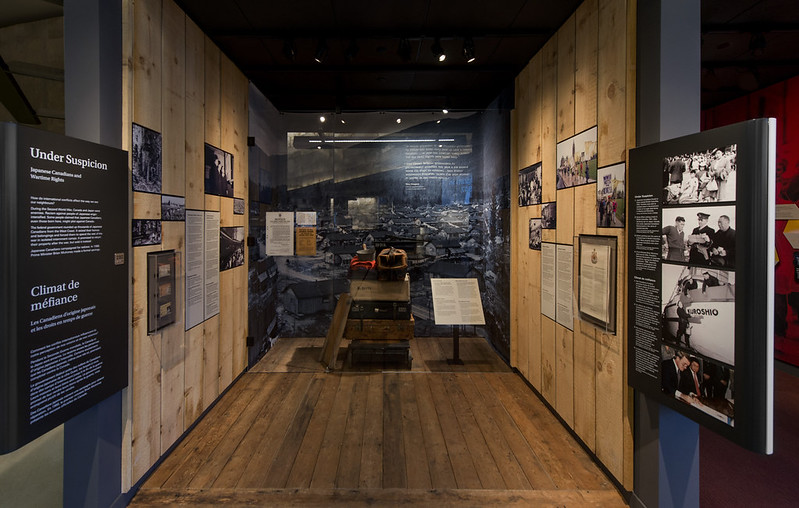Profile: Travis Tomchuk, The Canadian Museum for Human Rights

The Canadian Museum for Human Rights (CMHR) is one of Canada’s most innovative museums, hosting a multitude of interactive technologies, artifacts, and opportunities for learning and reflection. Located in Winnipeg, Manitoba, the museum seeks to give visitors a deeper understanding of human rights and their histories in Canada.
“The museum was made to enhance public understanding of human rights, promote the respect of others, and to encourage reflection and dialogue,” explains Travis Tomchuk, Curator of Canadian Human Rights History at the museum. As Travis notes, not all of the museum’s content is exclusively Canadian, however, there is significant emphasis placed on exploring human rights in relation to Canadian events, histories and politics.

The image of the Under Suspicion exhibition was taken by Ian McCausland.
The CMHR is different from many museums because it does not build exhibitions around its own artifact collection. Instead, exhibitions are created around a particular topic and a mix of interactive technologies as well as traditional artifacts. As Travis puts it, “interactive media and short films can help to tell stories that lack artifacts.”
Travis holds a PhD in History from Queens University, where he studied Italian radicals in Canada during the interwar period. Following this, he worked as the lead researcher and writer on the Italian Canadians as Enemy Aliens (ICEA) project based at the Columbus Centre in Toronto—a project which led Travis to consider further dimensions of working with Canadian human rights history, and how historians think about ethnicity and race in relation to human rights. His work on ICEA led to his current role with the CMHR. As a Curator, Travis’s work means continuously engaging with both historic and contemporary human rights issues in the Canadian context.
In the fall of 2025, the museum is set to host the Broken Promises: Legacies of Dispossession exhibition. Developed by Past Wrongs, Future Choices predecessor Landscapes of Injustice, in partnership with the Nikkei National Museum and Cultural Centre, Broken Promises is a travelling exhibition exploring the dispossession of Japanese Canadians in the 1940s.
The story of the arrival of Broken Promises at the CMHR is several years in the making. The relationship between the museum and Landscapes of Injustice (and now Past Wrongs, Future Choices) began when project director Michael Abe met with Travis at the CMHR. There they visited the museum’s Under Suspicion: Japanese Canadians and Wartime Rights exhibition on the uprooting of Japanese Canadians during the 1940s.
Travis believes the Broken Promises exhibition will be a great companion to the CMHR’s existing exhibition. Broken Promises will also give visitors the opportunity to have a deeper understanding of the scale of this forced uprooting and the repercussions of mass property seizure by the Canadian government on the lives of Japanese Canadians during this period.
The arrival of Broken Promises at the CMHR is an exciting milestone—however, the partnership continues on today in new directions with Past Wrongs, Future Choices. Travis and the CMHR were invited by Jordan Stanger-Ross to join as a partner on the project in 2021, and new work with Canadian and international partner museums and exhibitions is already underway. Travis’ work at the CMHR has focused mostly on the Canadian context, so he looks forward to learning more about connected histories and the Japanese diaspora in places like Brazil and Australia through the project.
“I’m really curious to see […] how things were different or similar in other parts of the world during the Second World War,” Travis said. He also believes that the research being done by Past Wrongs, Future Choices will be instrumental in gaining a better understanding of the histories of the uprooting, internment, and incarceration of people of Japanese descent across the world.
This article was written by Sarah Stilwell and McKechnie Bishop-Nicol, from an interview with Travis Tomchuk.

 Instagram
Instagram